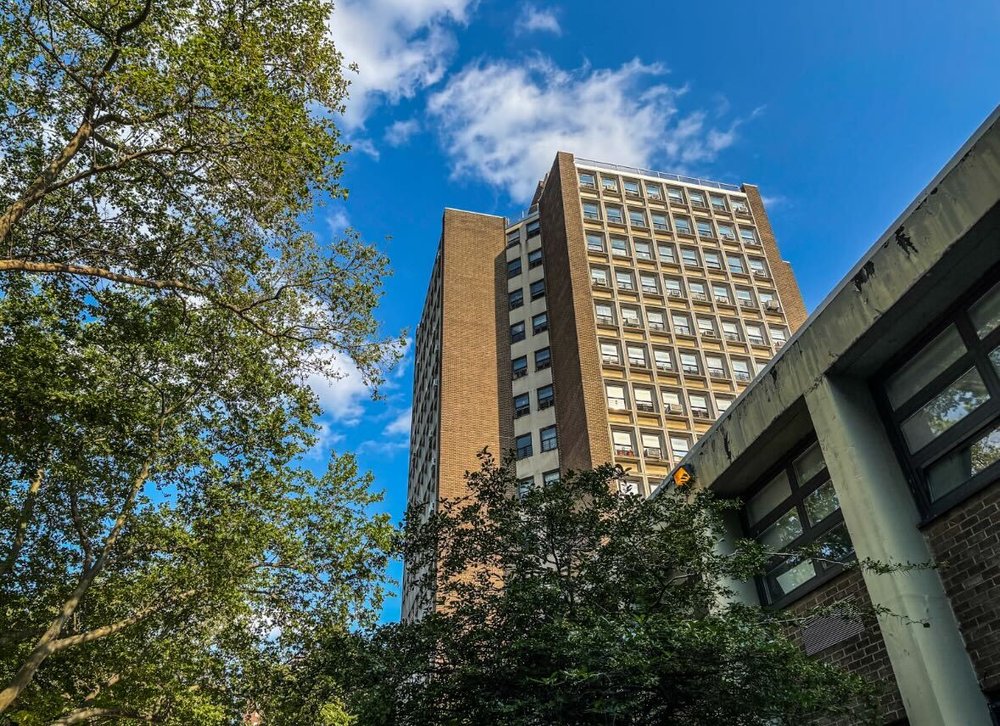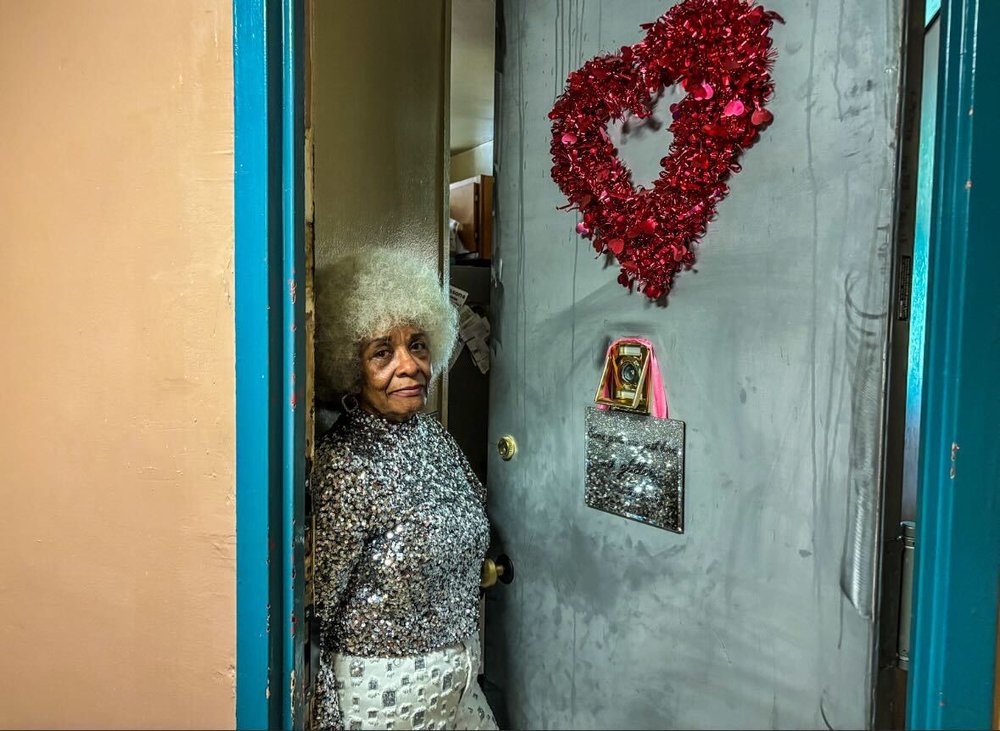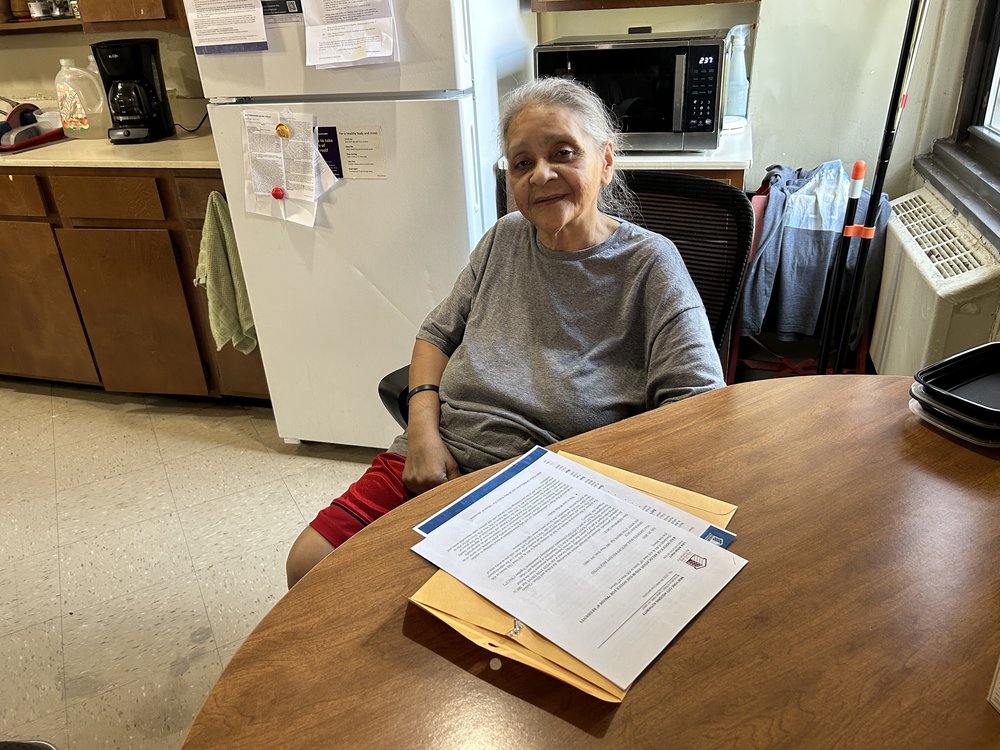Senior NYC residents at Elliott-Chelsea Houses receive orders to vacate
Aug. 4, 2025, 9:01 a.m.
Tenants in the public housing complex voiced concerns about moving from the senior-only building. The city and developers are trying to assuage their worries.

Residents of a senior housing complex in Chelsea are receiving vacate orders as the New York City Housing Authority moves forward with its plan to replace and modernize a sprawling public apartment complex with both new public housing and market-rate units.
Before construction can begin at the Fulton and Elliott-Chelsea Houses, 114 households have to move from two existing buildings. More than two-thirds of those households come from a building known as the Chelsea Addition, which exclusively houses senior tenants.
Tenants are being offered units in other NYCHA-owned buildings on the complex that aren’t tailored specifically for those aged 62 and older. They have 90 days to leave their current apartments. Some said they feared leaving behind the community and safety of a building meant for older New Yorkers .
Residents in other buildings will be allowed to stay until new homes are constructed on the site.
According to the three-page vacate orders, NYCHA and the two developers on the project are providing moving assistance and guaranteeing that rent prices won’t change. Once construction is finished in three to four years, residents from the senior building are guaranteed apartments in the new complex, according to the city’s plan.
“ I'm going to continue to fight on till I have no other recourse,” said Maria Santos, a 10-year resident of Chelsea Addition.
She said she doesn’t trust NYCHA and the private developers to provide her with new housing once construction is complete. She also worries about her safety once she leaves the seniors-only building. In her previous NYCHA building, she said she regularly witnessed drug use and gun violence.
“I feel much safer here,” she said. “ I'm surrounded by people my age, and I'm in a place where I can walk.”

Diana Chew, another Chelsea Addition resident, said she was mugged multiple times when she lived in a regular NYCHA building, before she moved into the seniors-only building. She said she feels safer where she lives now.
“We all love living here because all the facilities are designed for seniors,” she said. “Now, the developer wants to move us to a regular building, but it's neither safe nor convenient, so we don't want to move.”
So far, 28 of the 79 Chelsea Addition households have agreed to relocate, according to Ana Hall, a spokesperson for the developer, Essence. Hall said senior residents will be placed in the first few floors of one of the new buildings once construction is completed, but the building will not be just for seniors.
Jamar Adams, CEO of Essence, said he’s been speaking with senior residents about their safety concerns. He said Essence is exploring hiring additional security or installing Ring cameras to enhance surveillance and prevent break ins once they move to the general-population public housing.
“We’re evaluating all levels of security,” Adams said. “We want to ensure that they feel safe as much as we can.”
According to NYCHA and the developers, a majority of the residents of the Fulton and Elliott-Chelsea Houses support the project. Some tenant organization leaders contest that assertion, saying it was based on a flawed survey.
Mayor Eric Adams has referred to the project as “revolutionary.” The broader plan would replace 18 poorly maintained public housing buildings in Chelsea with brand new towers, while adding thousands of privately owned, market-rate units on the same publicly owned land..
“It is going to be a transformational project,” Jamar Adams said. “It’s going to be extremely beneficial to the residents that live there now, and the future residents who will have the opportunity to move to this community.”

Deborah Cruz, 72, said she’s looking forward to the move. She said she’s already signed a lease for her new temporary apartment.
Cruz, who is visually impaired, has been sharing her one-bedroom apartment at the senior complex with her son, who moved in to take care of her. His queen-sized bed currently fills her living room. The new apartment, Cruz said, is a two-bedroom unit. She said the city will also allow her to leave behind any furniture she wants to discard.
“We live in New York, and things change,” she said. “I go with the wind.”
As NYC moves forward with Chelsea plan, senior residents brace for relocation From abandoned Queens hospital to affordable housing, despite federal funding cuts Looking into a basement apartment? NYC proposes new safety rules.